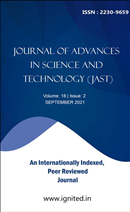A Study of Designing a Deep Learning Model for Diabetic Retinopathy Diagnosis
Keywords:
designing, deep learning model, diabetic retinopathy diagnosis, artificial intelligence, machine learning, diabetes treatment, India, data, hospitals, physicians, specificity, accuracy, networkAbstract
The healthcare industry is not immune to the widespread changes brought about by artificialintelligence and machine learning (AIML). Artificial intelligence and machine learning have the ability togreatly expand access to diabetes treatment, which would improve efficiency. With such a high prevalenceof diabetes, India poses a unique combination of challenges, but also presents an interesting opportunityin terms of the data that may be made available to study the disease. The data for our study was gatheredfrom a variety of hospitals. Physicians who have been in practice for more than 5 years are chosen asresponders. For these two class problem, researcher define specificity as the number of imagescorrectly identified as diabetic retina (diabretina) and normal retina (normalretina). Researcher definesaccuracy in the form of the images of retina with a accurate classification. This final designed networksucceeded with 80 of accuracy.Downloads
References
Devendra Kumar Mishra, and Shubham Shukla ROLE OF ARTIFICIAL INTELLIGENCE IN DIABETES MANAGEMENT. International Journal of Engineering Technologies and Management Research, 7(7), 80-88. https://doi.org/10.29121/ijetmr.v7 .i7.2020.728, 2020.
Giang Thu Vu, Bach Xuan Tran, Roger S. McIntyre, Hai Quang Pham, Hai Thanh Phan, Giang Hai Ha Kenneth K. Gwee, Carl A. Latkin, Roger C.M. Ho and Cyrus S.H. Ho Int. J. Environ. Res. Public Health, 17, 1982; doi:10.3390/ijerph17061982, 2020
Samer Ellahham “Artificial Intelligence: The Future for Diabetes Care”, The AmericanJournal of Medicine, Vol 133, No 8, 2020.
Singla, Rajiv & Singla, Ankush & Gupta, Yashdeep & Kalra, Sanjay. Artificial Intelligence/Machine Learning in Diabetes Care. Indian Journal of Endocrinology and Metabolism. 23. 495. 10.4103/ijem.IJEM_228_19.
Hanslal Prajapati1, Anurag Jain2, Sanjay Kumar Pal3 “ An Enhance Expert System for Diagnosis of Diabetes using Fuzzy Rules over PIMA Dataset”, International Journal of Advance Engineering and Research Development (IJAERD) Volume 4, Issue 9, September-2017, e-ISSN: 2348 – 4470.
Sahoo. PK, Suvendu Kumar Mohapatra And Shih-Lin Wu, Analyzing Healthcare BigData With Prediction for Future Health Condition. IEEE Access. Vol. 4, 9786-9799;2016.
Lin,K, F. Xia, W. Wang, D. Tian, and J. Song, "System design for big data application in emotion-aware healthcare'', IEEE Access, vol. 4, pp. 6901- 6909,2016.
Yu, Zhiwen; Luo, Peinan; You, Jane; Wong, Hau-San; Leung, Hareton; Wu, Si;Zhang, Jun; Han, Guoqiang., "Incremental semi-supervised clustering ensemble for high dimensional data clustering'', IEEE Trans. Knowl. Data Eng., vol. 28, no. 3, pp. 701-714, Mar. 2016.
Rallapalli S, R. R. Gondkar, and U. P. K. Ketavarapu, "Impact of processing and analyzing healthcare big data on Cloud computing environment by implementing hadoop cluster,'' Procedia Comput. Sci., vol. 85, pp. 16-22, May 2016.
Ibrahim M. Ahmed, Marco Alfonse, Mostafa ArefDr.Adbel-Badeeh M. Salem, “DailyMeal Planner Expert System for Diabetics Type-2”, E-Leader Prague 2015.
Ashwin Belle, Raghuram Thiagarajan, S. M. Reza Soroushmehr Fatemeh Navidi, Daniel A. Beard, and Kayvan Najarian, Big Data Analytics in Healthcare BioMed Research International Volume 2015.
McAfee et al. have described that “Big Data is a collection of heterogeneous complex data which requires new hardware and software devices to store, analyze and visualize the data successfully. Healthcare data is available in many healthcare centers of researchers, health insurance managements and government organizations. However, these data are not able to deliver comprehensive information to the users”, 2012.
McAfee A. E. Brynjolfsson, T. H. Davenport, D. J. Patil, and D. Barton, “Big data: the management revolution,” Harvard Business Review, vol. 90, no. 10, pp. 60–68, 2012
Lee M and X. Han, "Complex window query support for monitoring streaming data in wireless body area networks'', IEEE Trans. Consum. Electron., vol. 57, no. 4, pp. 1710-1718, Nov. 2011
Elshazly H , A. T. Azar, A. El-korany, and A. E. Hassanien, “Hybrid system for lymphatic diseases diagnosis,” in Proceedings of the International Conference onAdvances in Computing,Communications and Informatics (ICACCI’13), pp. 343–347, IEEE, Mysore, India, August 2013.
Dougherty G, Digital Image Processing forMedical Applications, Cambridge UniversityPress, 2009.
Dilip Kumar Choubey, Sanchita Paul and Joy Bhattachrjee , “Soft Computing Approaches for Diabetes Disease Diagnosis: A Survey”, International Journal of Applied Engineering Research ISSN 0973-4562 Volume 9, Number 21,2014 pp. 11715-11726
Anindito Yoga Pratama, Dewi Agushinta R., and Remi Senjaya ,“Design Of Mobile Expert System For Diabetes Risk Diagnosis And Information”, Journal of Information Systems, Volume 9, Issue 1, April 2013, 32-36
M. Kalpana, Dr. A.V Senthil Kumar,“Diagnosis of Diabetes using Correlation fuzzy logic in Fuzzy Expert System”, International Journal of Advanced Research in Computer Science, 3 (1), Jan –Feb, 2012,244-250
D., Tadić, P., Popović, A., Đukić,“A Fuzzy Approach to Evaluation” Yugoslav Journal ofOperations Research Volume 20, 2010, Number 1, 99-116 , 10.2298/YJOR1001099
Abdulla Al-Malaise Al-Ghamdi et al, “An Expert System of Determining Diabetes Treatment Based on Cloud Computing Platforms”, (IJCSIT) International Journal of Computer Science and Information Technologies, Vol. 2 (5) , 2011, 1982-1987
Li, J., Huang, J., Zheng, L., & Li, X. Application of Artificial Intelligence in DiabetesEducation and Management: Present Status and Promising Prospect. Frontiers in public health, 8, 173. https://doi.org/10.3389/fpubh.2020.00173, 2020.
Jyotismita Chaki, S. Thillai Ganesh, S.K Cidham, S. Ananda Theertan, “Machine learning and artificial intelligence based Diabetes Mellitus detection and self- management: A systematic review”, Journal of King Saud University - Computer and Information Sciences, 2020, ISSN 1319-1578,https://doi.org/10.1016/j.jksuci.2020.06.013.
Mercedes Rigla “Artificial Intelligence Methodologies and Their Application toDiabetes”, Journal of Diabetes Science and Technology 2018, Vol. 12(2) 303–310






